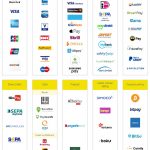 In 2011 and 2012, Scott Brinker from published the Marketing Technology Landscape. Promoting and advertising technologies are blurring The transition to a digital, always on, often connected panopticon has allowed a blending of the methods and technologies in between advertising, marketing and advertising, CRM and other industries.
In 2011 and 2012, Scott Brinker from published the Marketing Technology Landscape. Promoting and advertising technologies are blurring The transition to a digital, always on, often connected panopticon has allowed a blending of the methods and technologies in between advertising, marketing and advertising, CRM and other industries.
They aid enable ecosystems by means of the APIs and their ISVs (independent software program vendors) that allow hundreds or possibly even thousands of corporations to come up with much more focused, revolutionary, promoting software that plug into that environment and seriously give marketers the greatest of both worlds.
The 2017 is expected to be the year of clever devices, which will be loaded with the latest technology functions and automated functions that assistance marketers and common customers to fulfill their all digital requirements via 1 device.
Although these distributed architectures are conceptually extra difficult than a centralized platform, they provide a number of benefits, which I described in the section on microservices in my ebook 5 Disruptions Reshaping Marketing as We Know It — above all, tremendous flexibility to adapt to transform.
Scott applied a ‘stack’ metaphor for his 2014 and 2015 mapping that positioned infrastructure and platform systems at the bottom and experience and operations applications on major, understandably reflecting a belief that in most organisations martech would coalesce around a single platform (with some notable large players competing for that function) augmented by an assortment of specialised applications and services that may possibly plug into that platform.








